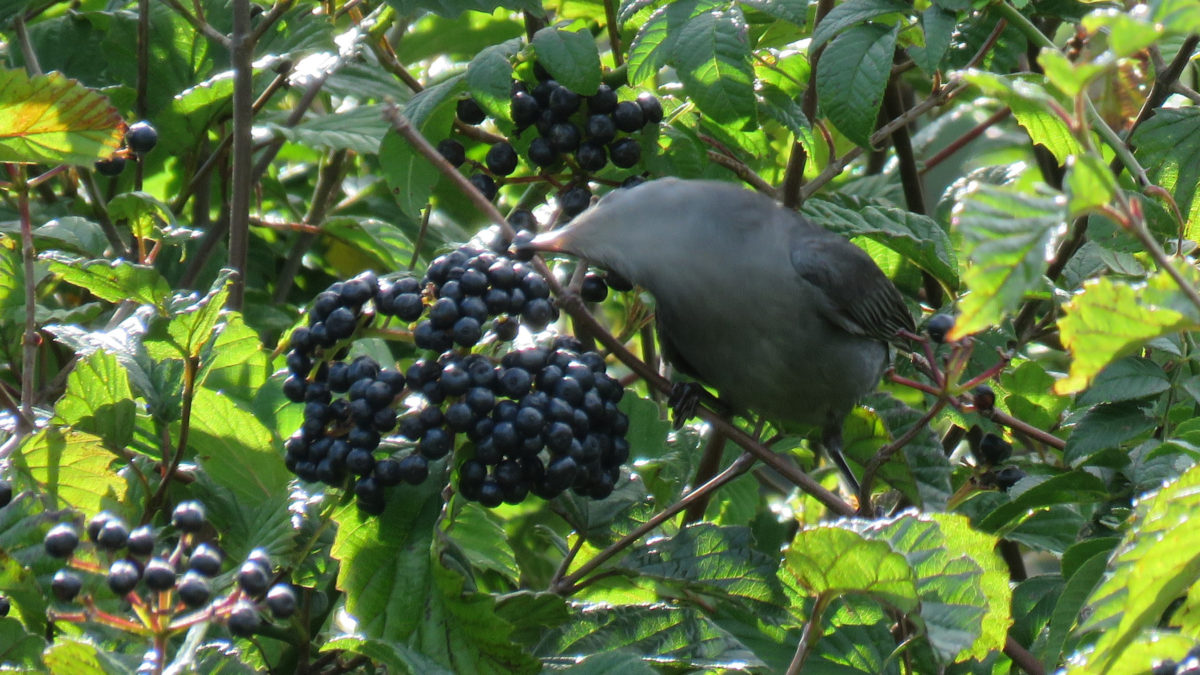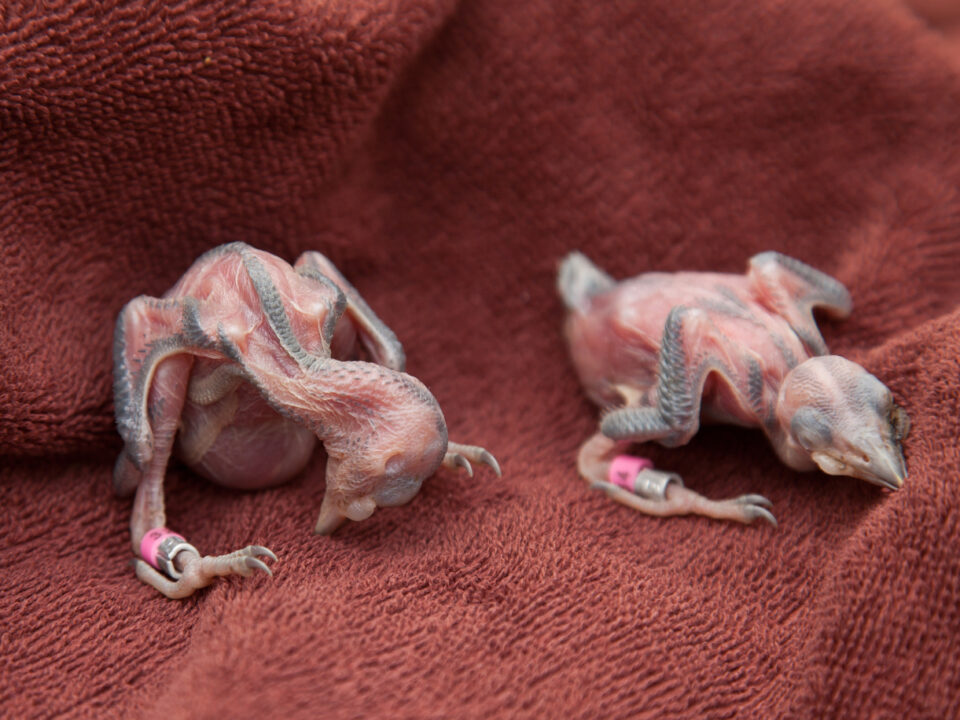Ripening Fruits Fuel Migrating Songbirds

Chasing Black Rails
October 6, 2022
Trail Cameras Capture Bayside Birdlife
October 6, 2022By: Chance Hines
10/4/2022
Autumn approaches and, sensing this seasonal shift, migratory songbirds throughout our region begin making their way towards wintering destinations as far away as southern South America. Many of these birds depend on ripe fruits to fuel their southwards journey. Fruits represent an efficient fuel for many birds because, unlike insects, fruits do not require an energy-depleting chase to hunt down and many contain high proportions of fats necessary to fuel long-distance flights.
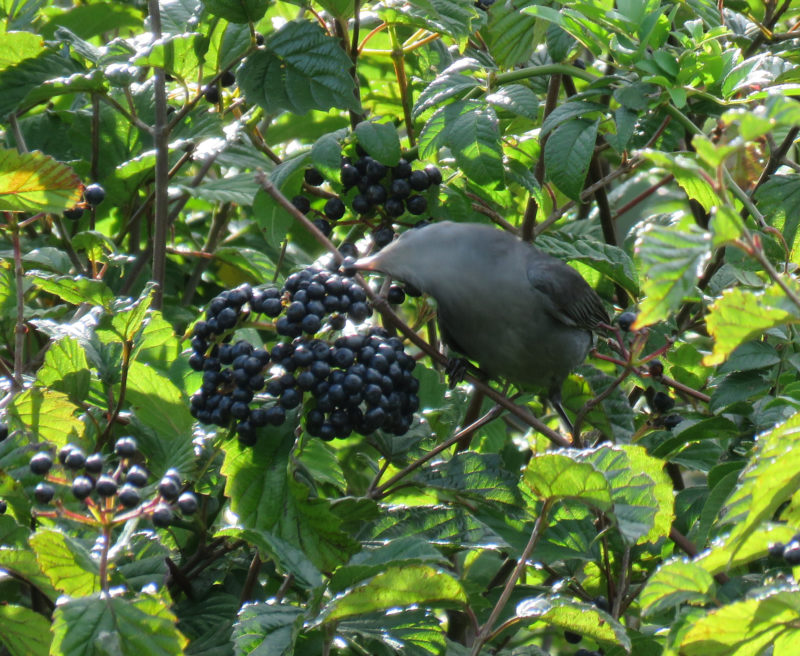
Virginia supports many species of native fruits that can grow on a variety of plant forms including vines, shrubs, and trees. Fruits you most commonly see growing on vines include wild grapes, Virginia creeper, and poison ivy. Common trees that provide fruits to migrating birds during autumn include flowering dogwood, sassafras, and devil’s walking stick. Shrubs that support autumn fruits within our region include bayberry, spicebush, and several species of viburnum.
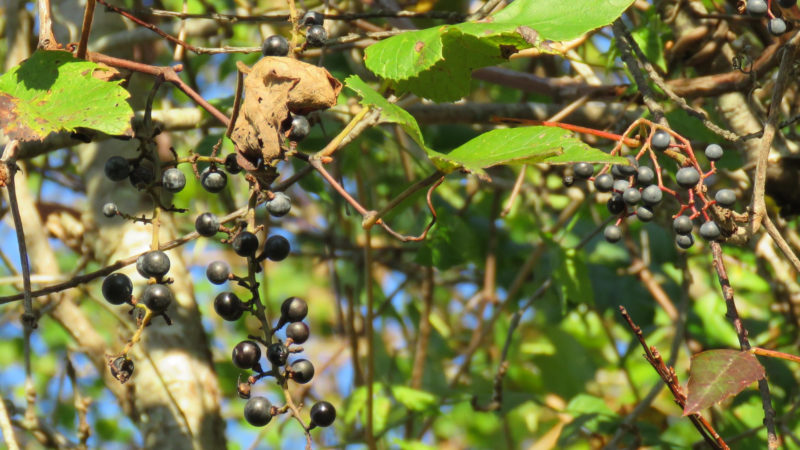
The Center for Conservation Biology staff collected fruits from several of these plant species and analyzed their nutritional content to understand which plant species best benefit birds. Results from this study indicated that sassafras was the most energy dense fruit collected. Sassafras fruits averaged the highest fat content at more than 60%, so this fruit is especially valuable for birds preparing for long-distance flights. Past research by CCB staff corroborates this finding. Sassafras fruits begin ripening during mid-late August and are quickly consumed within a couple weeks. In fact, Sassafras was the most quickly consumed fruit at study sites on the southern tip of the Delmarva Peninsula, a hotspot for autumn migrants.
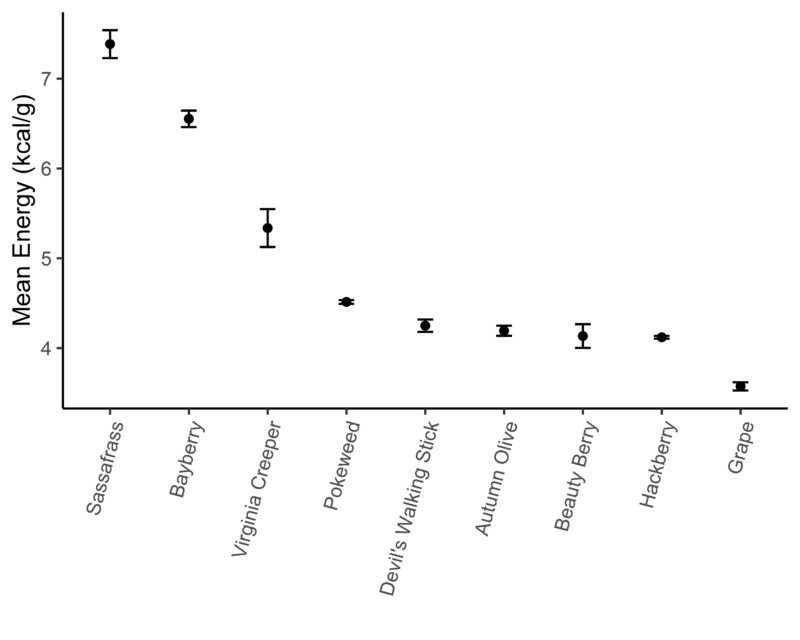
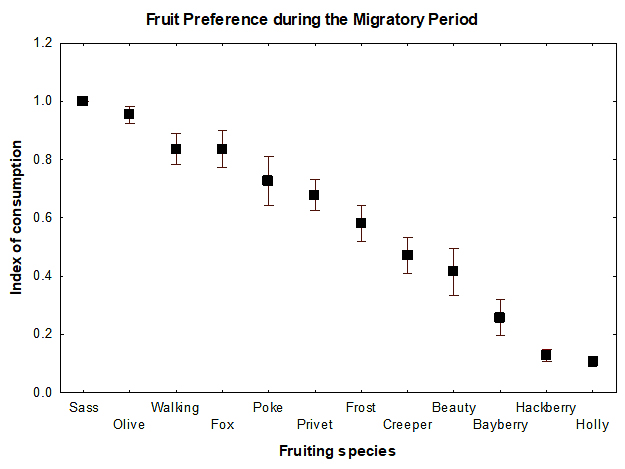
Bayberry fruits were also energy-dense and the only other fruit CCB analyzed to boast >50% fat content. However, bayberry fruits are not consumed as rapidly as Sassafras and other fruiting species. This is because the fat within bayberries is almost indigestible for the majority of bird species. Bayberry fruit consumption is primarily restricted to two bird species, yellow-rumped warblers and tree swallows, with special digestive adaptations that allow them to digest waxy esters found within bayberry fruits. You will often see these bird species foraging on bayberry shrubs during mid-late autumn.
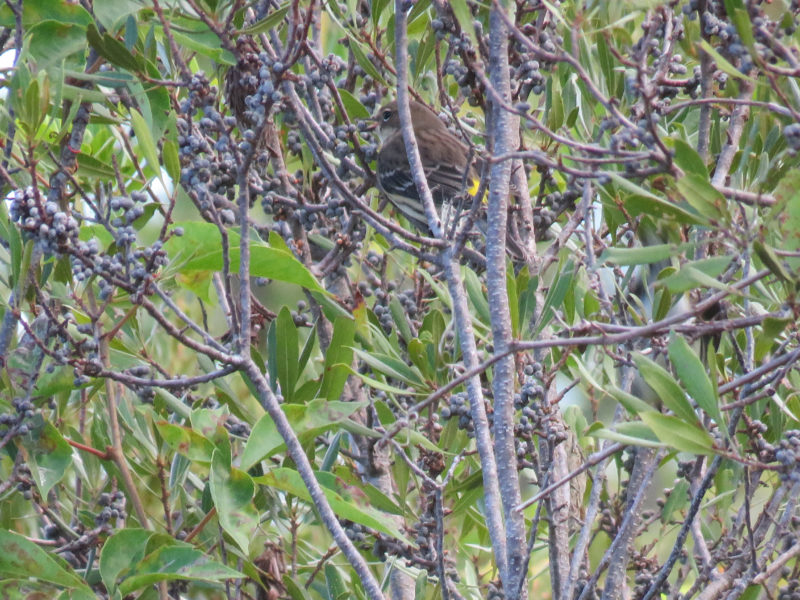
Understanding how different fruits provide energy to bird species is crucial to managing migratory songbird habitat at autumn hotspots like those found on the lower Delmarva Peninsula. We hope data collected by CCB will inform management decisions in these locations so that habitat can be improved and increase the odds that birds complete their southward migrations.
Related posts
Adult female from Elkins Chimney territory. Both the female and male were lost from this site between 2024 and 2025 nesting seasons and were not replaced. This territory has been occupied since 1995. Five territories were vacated between 2024 and 2025 along the Delmarva Peninsula in VA. Photo by Bryan Watts

